The Japanese maple below was created by Gene Lynch. It had been a while since it was repotted so I removed it from the pot to check out the roots.

Japanese maple group planting

Jim Gremel pot
As expected, the roots formed a solid mat along the bottom of the pot.
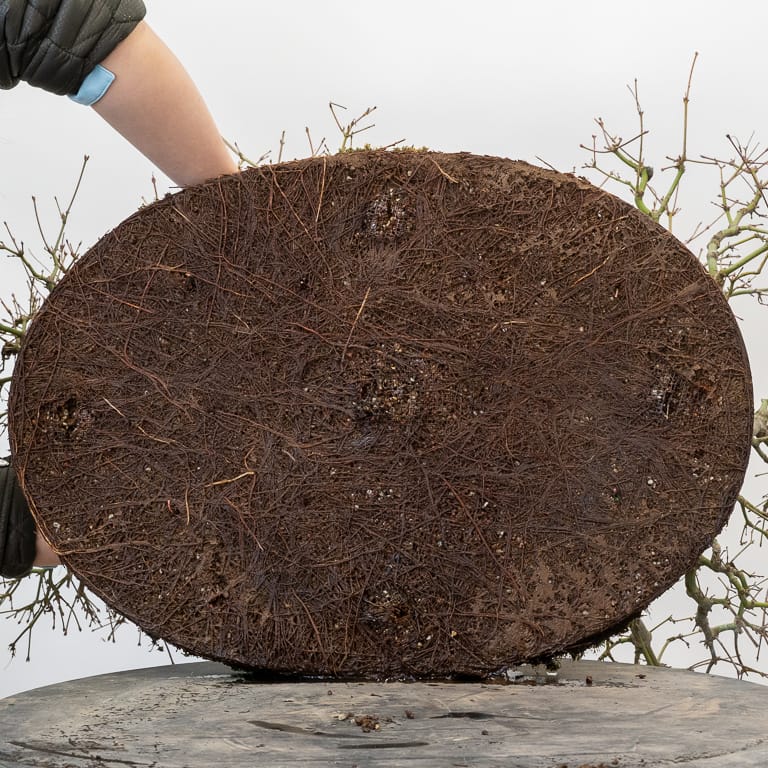
Matted roots
My goal for the repotting was to reveal the trees’ surface roots and remove as much old soil as possible.
I started by removing the soil that had built up above the trees’ surface roots.
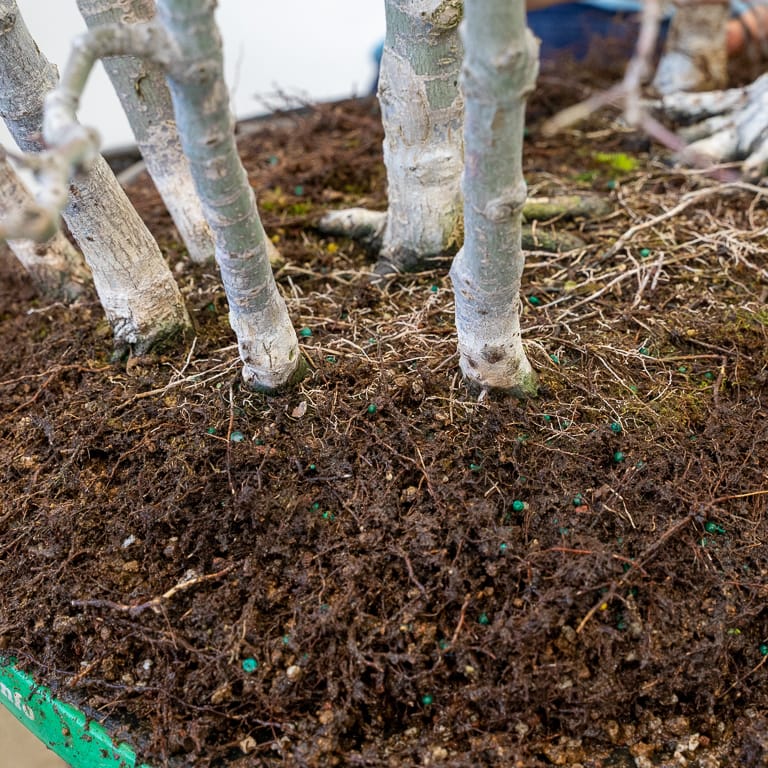
Buried surface roots
Using a chopstick and bent-nose tweezers made it easy to remove the top half-inch of soil that covered the surface roots.
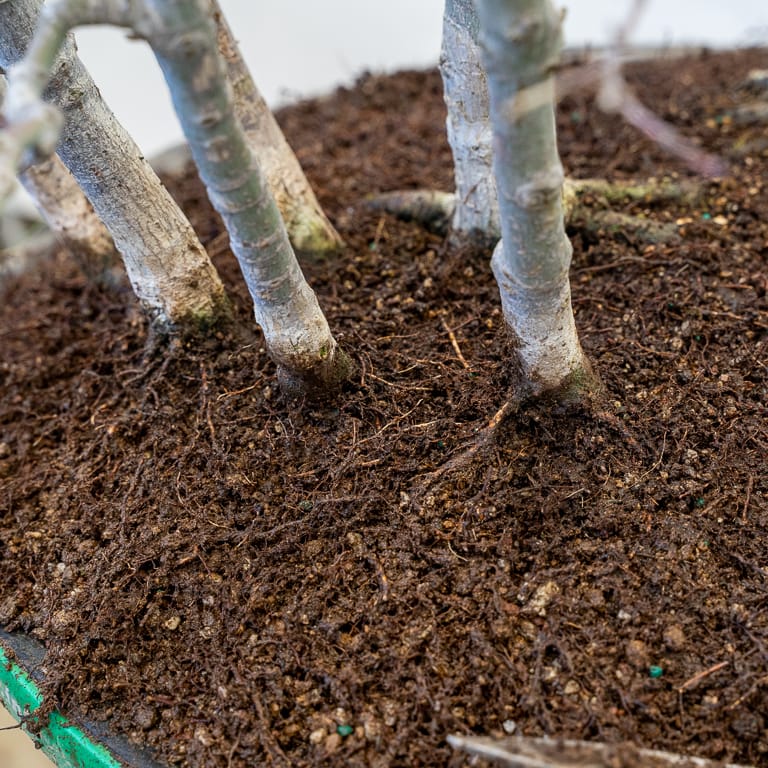
After removing the upper layer of old soil
A nylon brush helped remove moss and stubborn soil clinging to the base of the trunks.
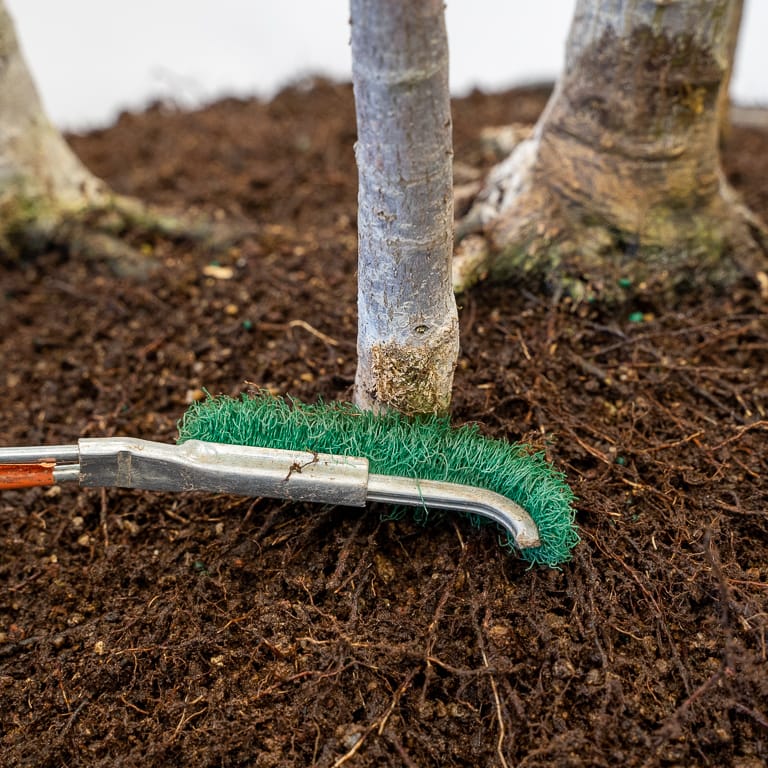
Brushing the base of the trunks
After removing the broken down soil and cleaning the base of the trunks, a quick rinse removed the last traces of old soil.
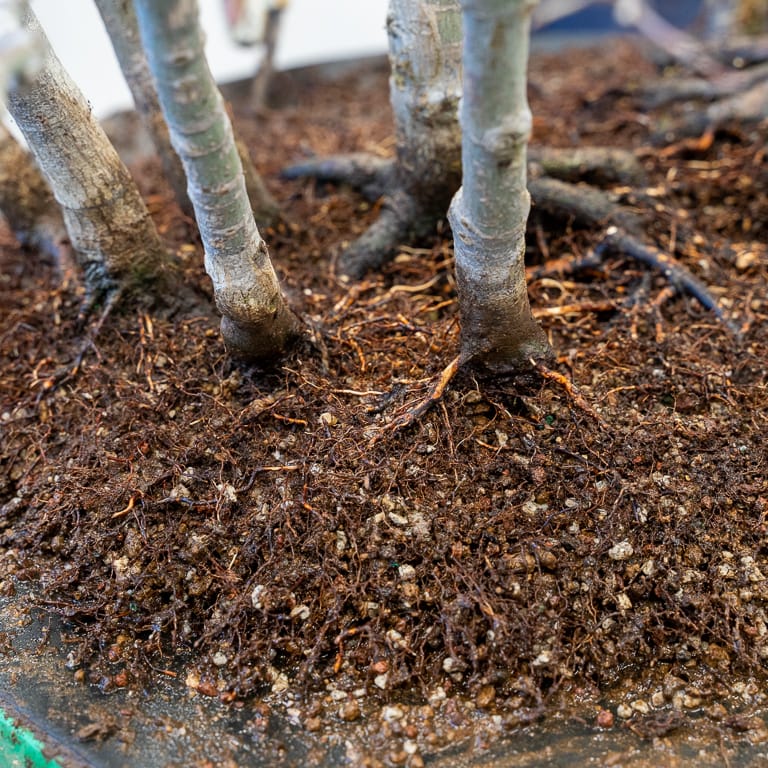
After rinsing off the muddy soil
Once the top of the rootball was ready to go, I repeated the process on the bottom of the rootball. Here’s the tree after this work was complete.
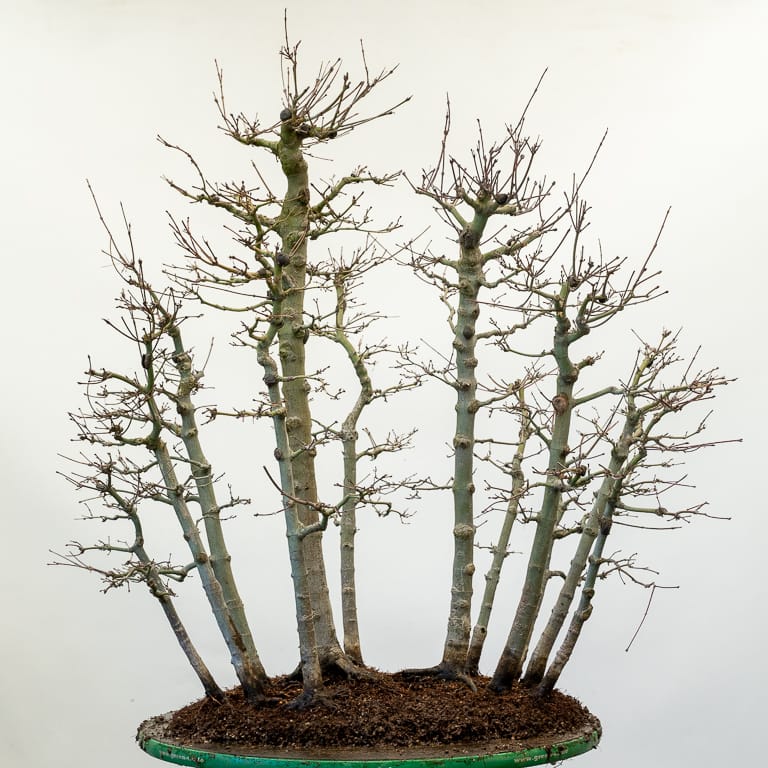
Root work complete
I considered bare-rooting the tree but didn’t want to stress it too much so I left some of the old soil. I’ll plan to remove the remaining old soil in a subsequent repot.
From there I returned the tree in the same pot and applied a thin layer of shredded white sphagnum moss. The soil mix is roughly 65% akadama and 35% pumice.
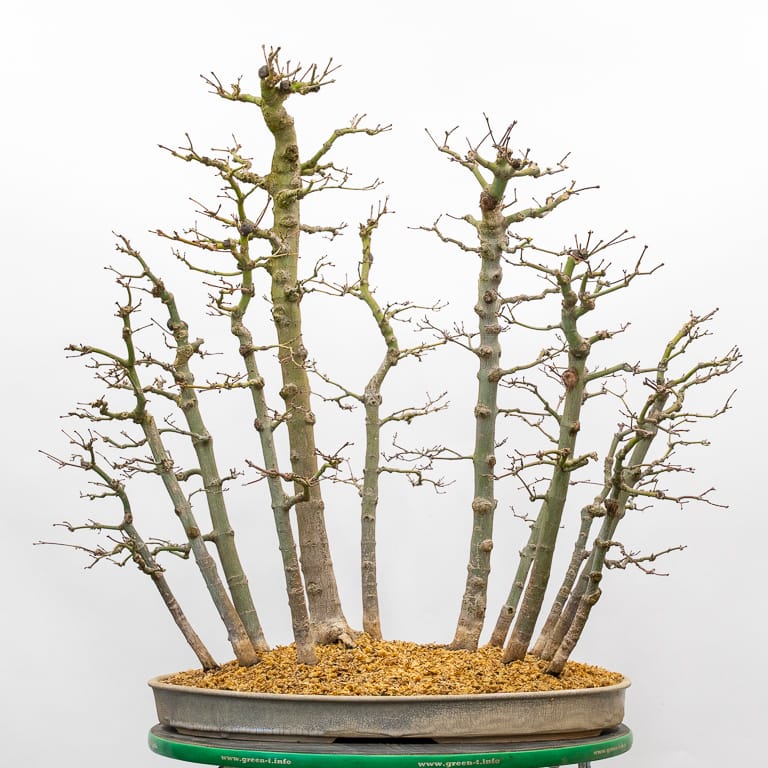
Repotting (and pruning) complete – 29″
I expect the tree to stay in this pot for another two-to-three years before it needs repotting again. During that time, I can start making improvements to the branches.
I can also think about whether or not to rearrange the trunks. I noticed that the rootball was flexible during repotting so it will be possible to make changes, if desired, the next time the tree is repotted.
New Podcast Episodes with Kaya Mooney and Carmen Leskoviansky
The Bonsai Wire Podcast recently featured interviews with Kaya Mooney, an apprentice at Kouka-en near Osaka, Japan, and Carmen Leskoviansky, caretaker of the bonsai collection at the Matthaei Botanical Gardens in Michigan. You can check out both episodes at bonsaiwirepodcast.com.
Subscribe to Bonsai Tonight
New Posts Delivered Every Tuesday and Friday
Jim Stimmel says
You did this in January, in California?
Jonas Dupuich says
Hi Jim – Yes. I often start repotting in December and try to finish up in January as trees are already growing in my garden.
Loi Le says
What kind of root hormone did you use? Thanks.
Jonas Dupuich says
Hi Loi – I didn’t use root hormone when I repotted the tree. I only use hormones when I take cuttings.
Alessandro says
Nice job Jonas, as usual!
It seems to me that in the leader tree on the left (and also in the second leader on the right) there is a lack of “conicity”… do you plan some works in this direction? How?
Thank you for sharing your experiences!!!
Alessandro
Jonas Dupuich says
Thanks, Alessandro! That’s right – the apex lacks taper which leaves two options: reduce the trunk and grow a new apex or make the tree taller by extending the apex with more slender growth. I expect I’ll grow new apices on both of these trees as the planting could be a few inches taller.
Tony says
Hi Jonas…..looks refreshed and ready to grow!….would you condie adding additional trees to the composition?….are there 12 trees in this group? Thanks
Jonas Dupuich says
Thanks, Tony! Yes, I’d definitely consider adding or subtracting trees if I can find good matches. There are 12 now. I plan to rearrange things a bit the next time I repot.
Tony says
cool!…..it is a very good composition so with your normal tweaking will be even better….as you know I have a weakness for forest plantings!…
Joel Otteman says
Beautiful composition
Jesus says
Hi Jonas
About the soil composition, 65% akadama is what you use for all/most deciduous? or just for maples?
Also, is fired akadama (aka. super hard) a good component? or will it act as turface?
Jonas Dupuich says
Good questions Jesus! I use different mixes for deciduous bonsai ranging from 30-50% akadama at the low end to 80% akadama on the upper end. Tree health, stage of development, and species affect how much akadama I use.
As for the fired akadama, I don’t have much experience with it so I can’t recommend or discourage its use. Fired akadama doesn’t behave like unfired akadama but I don’t know that it shares characteristics with Turface either.
Jesus says
Thanks very much